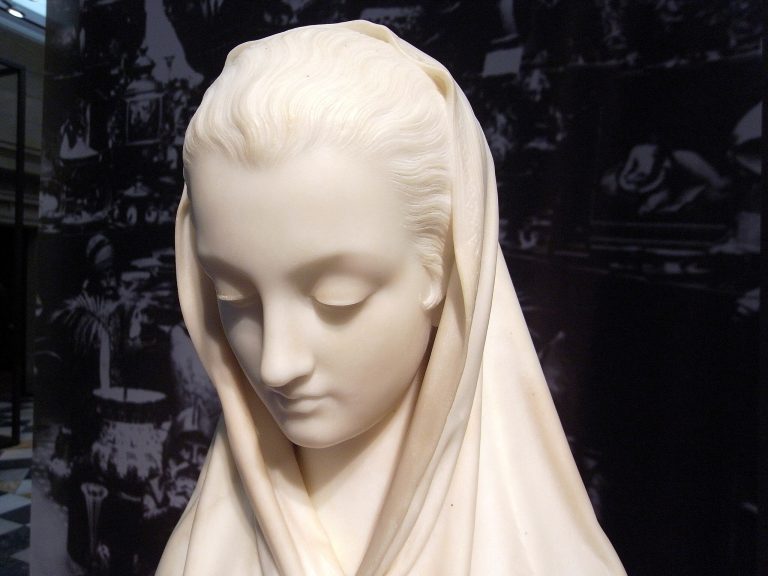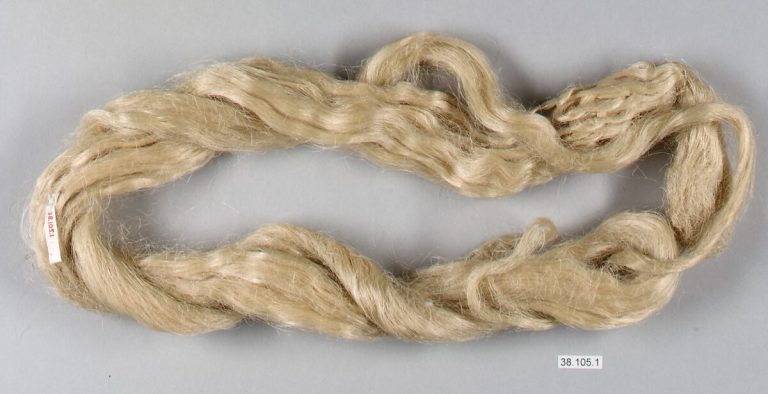Throughout the millennia, modesty has been an infallible synonym for beauty. Especially for women, modesty has served as a means of reflecting one’s worldview and virtue, accentuating both one’s physical appearance and inner beauty.
Since the beginning of civilization, people have worn clothing not only to cover and protect their bodies, but also to adorn and enhance them. The propensity to decoration, inspired by the charm and beauty that we see in nature and the perfection we have perceived in divine manifestations, is part of human nature.
Although aesthetic standards are always changing – especially when it comes to fashion – the criteria for discerning true beauty and decorum never do. By simply evaluating the impact a look has or the messages it conveys to others, we can gauge the propriety of our appearance, and what it does for our reputation.
Let’s explore what it means to be a modest woman, and the challenges we face in cultivating such a valuable virtue today.

Lost modesty?
It is common to associate modesty with faded fashions – such as the long, full dresses of the Victorian Era, the severe, black broadcloth of the Pilgrims, or the elegant, traditional kimonos of Japan. Today, we see modesty in the fine, tailored clothing of the elite; yet one can also dress modestly in simple, everyday clothes.
Success
You are now signed up for our newsletter
Success
Check your email to complete sign up
Unfortunately, finding modest clothing is more of a challenge. Many of the articles sold in retail stores are downright revealing. If they are not designed to expose a woman’s skin, they are skin-tight – leaving nothing to the imagination.
Our ancestors observed no such phenomenon, neither in the East nor in the West. What has caused such a change in the perception of the female body and what we put on it?
One likely factor is the loss of human dignity – rooted in the popularized theory of evolution. In the past, people firmly believed that human beings were a special creation of God, made in his image. As a gift from God, the human body was to be respected and treasured, cared for and adorned in a manner worthy of divine blessing.
According to evolutionism, however, man is no longer a unique creation of God, but a product of random chance; a means, not an end, of evolution. If the creation of the human body is but one link in the chain of evolution, has it no greater significance than any other link in the chain? By this standard, what human beings do with their bodies becomes trivial.
At the same time, our present culture is pervasively obsessed with sex. The female figure is used – and misused – to stimulate desires. Everything from magazines to fast food advertising is plagued by the seductive female icon, implicitly dismissing the need for self-restraint and discrediting the traditional idea of femininity.

As a consequence of these new perspectives, the modern perception of the body is one in which women must strive to meet society’s canons of physical beauty. The promotion of certain body shapes and the growing dissatisfaction with one’s own physical proportions lead many women to adopt extreme diets, or even go under the knife. Girls and women alike become preoccupied with pulling off the provocative styles displayed on mannequins.
Recovering modesty
While cultures differ, our ancestors shared similar values. They all agreed on one point – chastity is the glory of a woman’s body. Entrusted with the procreation of life, it holds a sacred purity and beauty. Feminine modesty revolves around reserve – not intending to attract attention, and certainly not enticing sexual desire.
Modest fashion can go a long way to restore modesty, yet this quality encompasses much more than the clothes we wear. It relates to the way we carry ourselves, the words we speak and the intentions behind our actions.
Dressing modestly
Dressing modestly is surprisingly easy. Consider the fit, neckline, hemline, and messages of each article of clothing and you will highlight your inner beauty with charming simplicity.

- Fit: Clothing should appear naturally fitted – neither tight nor baggy. Choose proper slacks over leggings, tops that flatter without accentuating the bosom, and skirts that are full enough to allow for normal mobility. There are many designs that speak to your femininity without advertising your sexuality, such as delicate button-ups, gathered waists or soft sweaters.
- Neckline: As a rule of thumb, a modest neckline is no lower than four fingers below the collarbone. Rather than cleavage-revealing scoops and plunges; choose round, crew, high, turtle, square or U-necks.
- Hemlines: To keep your grace, tops should cover the shoulders and midriff, while skirts should at least come to the knees. Avoid short shorts, miniskirts and halter tops. More substantial garments constructed with lighter fabric are just as cool, and protect you from the sun as well. Going swimming? Bring a tasteful coverup for when you’re not in the water.
- Messages: A modest appearance is soft spoken. Loud colors, flashy motifs and outrageous designs all scream “look at me!” just as effectively as a written message on a T-shirt. A modest woman will stand out for her manners and pleasant personality in simple, subdued, and tasteful attire.
When a woman is choosing her clothing, an important question should come to mind: “What kind of people do I want to attract?” Immodest clothing will undoubtedly bring the attention of men who are easily driven by desires.
-e1683434252552.jpg)
Beyond clothing
Altering the wardrobe alone cannot change one’s demeanor. At the heart of modesty is strength of character and poise. To nurture modesty, a woman must cultivate her feminine virtues with a pure heart.
- Bearing: The way we carry ourselves is telling of our character. Do you walk gently or do you strut? Do you make unnecessary movements with your hands and arms or do you engage them gracefully? Pay attention to your movement and you may find it naturally becoming more refined.
- Posture: When sitting, keep your back straight and lengthen your spine. Good posture will give you an air of nobility. The chin should be parallel to the floor as if balancing a book on your head. Leg-crossing, a traditional way to preserve modesty when wearing a skirt, can actually make it harder to sit up straight. By crossing the ankles instead of the legs, you can maintain a more comfortable position and show less skin.
- Contact: Reserve your affection among men. While physical contact can be a way of expressing kindness and trust, it can easily be misinterpreted. Try to limit physical contact to handshakes when it comes to males who are not relatives. Even eye contact and facial expressions can seem inviting, so be careful how you use them.
- Speech: Watch what you say, how you say it, and to whom. A modest woman’s words are full of grace and gratitude. Knowing that words are like plucked feathers that can’t be recovered, she avoids talking about intimate matters and errs on the side of reserve.
It may take wisdom, humility, self-restraint and courage to be a modest woman in today’s world, but the rewards go deeper than you might imagine.
The power of a modest woman
Women, as the tangible embodiment of that which is gentle and humble in the universe, play a key role in defining humanity’s moral standards. When women are virtuous, they have the power to spiritualize mankind.

A modest young lady may inspire the men around her to improve themselves and become worthy of her. A modest mother will instill in her children the same values that have led her to cultivate propriety and morality. A modest grandmother will preserve timeless virtues and pass them on to younger generations.
A modest woman naturally inspires respect. Her manner of dress reflects her inner world and speaks of the purity of her heart and mind. She has strong self-control so as not to give in to the desire for attention or praise, and is vigilant not to tempt others to be impure in their thoughts. With strong faith, she wants to please the Creator with the care of her body. The depth of her beauty is bound to be perceived by the spiritually minded man, who will strive to earn the reward of her virtue.
Note: Many ideas in this article are inspired by the book The Beauty of Modesty: Cultivating Virtue in the Face of a Vulgar Culture by David Vaughan and Diane Vaughan.















